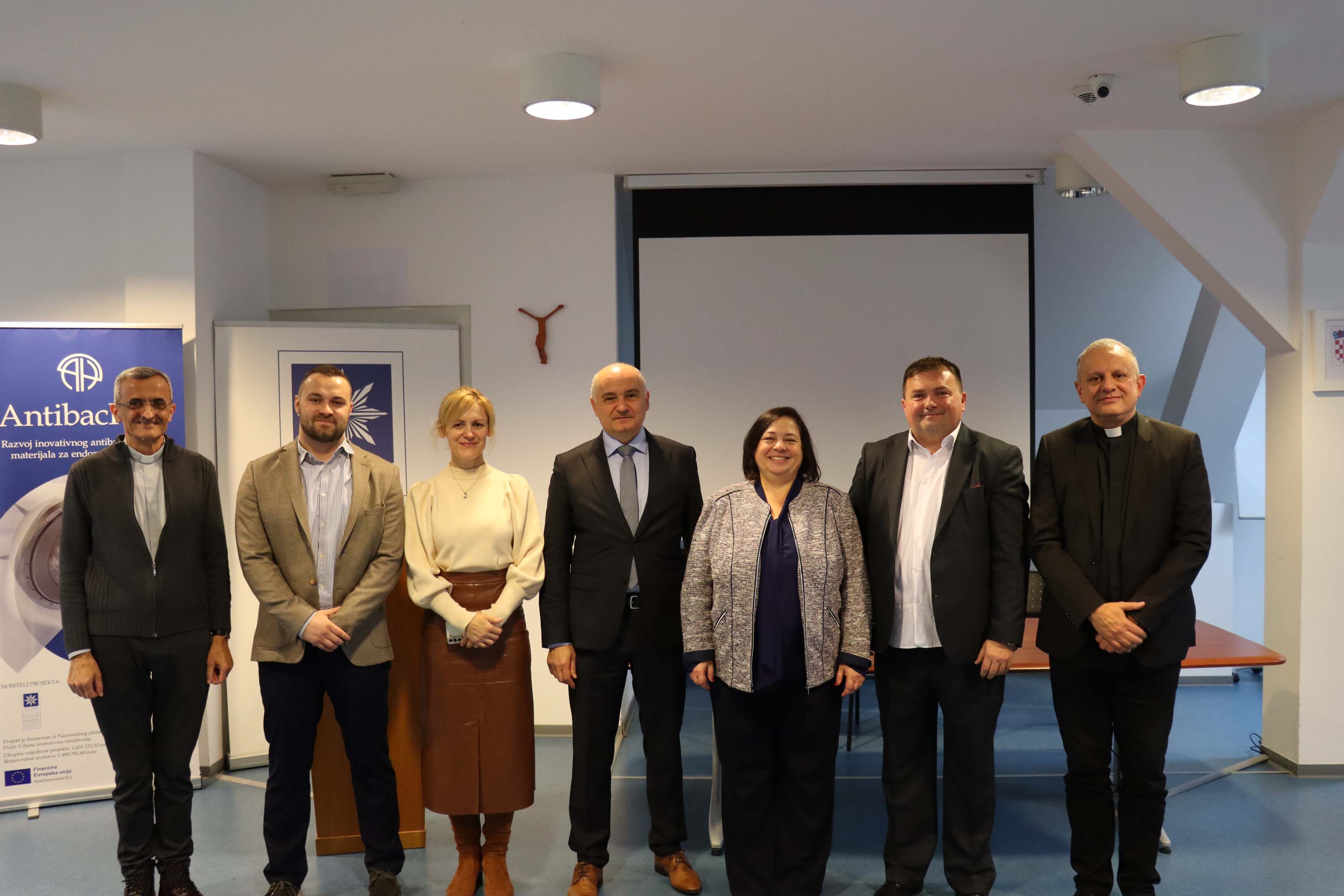Share
New scientific project "AntibacHip" in cooperation of HKS, FKIT and company Instrumentaria
On Friday, December 13, 2024, in the Stepinac hall of the Catholic University of Croatia, the new project "Development of innovative antibacterial material for hip endoprosthesis - AntibacHip", which the Catholic University of Croatia (CUC) is implementing in partnership with the Faculty of Chemical Engineering and Technology of the University of Zagreb and the company Instrumentaria d.d., was presented.

The opening speech was given by prof. Željko Tanjić, PhD, rector of CUC, expressing his pride that different experts have gathered in a partnership under the leadership of CUC, he congratulated them all on their innovation and wished them luck in their work during the next two years of the project.

Along with the rector, prof. Ante Jukić, PhD, dean of FKIT and director of Instrumentaria d.d. Mr. Stevica Hodić.
 |  |
The AntibacHip project was financed as part of the "Targeted Scientific Research" call from the National Recovery and Resilience Plan 2021-2026, with a total value of 1,631,172.52 euros, and the contract was signed in August 2024 for two years. The project manager is prof. Tamara Grgurić Holjevac, PhD, in front of the Catholic University of Croatia as a leading partner, and the partners in the project are the Faculty of Chemical Engineering and Technology and the company Instrumentaria d.d. The project is focused on the development of an innovative hip endoprosthesis material with improved biofunctionality, antibacterial properties and the ability to prevent the formation of biofilm on the surface of the implant. The project addresses the problem of the occurrence of infections after the installation of a hip endoprosthesis and the consequent rejection of the implant, as well as reoperations and economic costs. Advanced technologies will be used to prepare innovative titanium alloys, which offer the potential to obtain a more economically favorable implant, improved corrosion and excellent mechanical properties, and greater resistance to fatigue, and will be tested in the laboratory through the creation of an endoprosthesis prototype.















